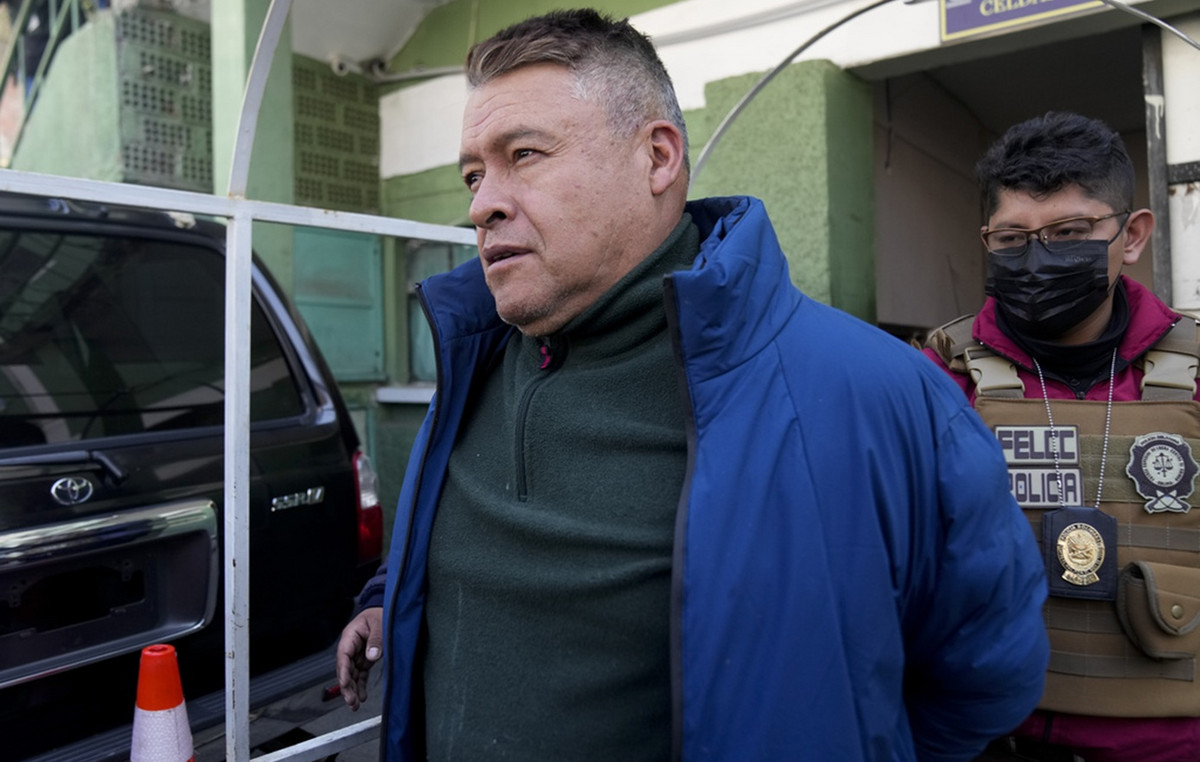It is possible to have Covid-19 and Influenza co-infection. In recent days, the combination has been called “Flurona” — a neologism for mixing the terms “flu” and “corona”. The term, however, is not adopted by the scientific community, which prefers to treat it as a co-infection.
The first case of Covid-19 and Influenza coinfection was identified in Israel and notified in late December 2021. In Brazil, at least seven states and the Federal District, up to the date of this publication, have confirmed cases of coinfection.
A few weeks ago, pulmonologist Margareth Dalcomo, a researcher at the Oswaldo Cruz Foundation (Fiocruz), told CNN that it was possible to get both viruses at the same time.
CNN spoke with three experts to explain what you need to know about the topic.
How and why co-infection with influenza and Covid-19 occurs
It is important to emphasize that “Flurona ” it is not a new virus, mutation or a junction of the two pathogens. It’s just the phenomenon of being infected by two viruses simultaneously.
“You have a Covid co-infection and influenza, it’s not like we had a combined virus, a mixture. There are two different viruses,” he told CNN João Prats, infectious diseases specialist at BP – A Beneficência Portuguesa de São Paulo.
He explains that both viruses that are circulating have a similar form of transmission and can infect people. “Just as it was common in arboviruses in the past to have co-infection, such as dengue, Zika and chikungunya”, points out Prats.
“These are viruses from different families, there is no possibility of joining them”, he explains to CNN Álvaro Furtado, from the Hospital das Clínicas, Faculty of Medicine, University of São Paulo (HCFMUSP).
He points out that the coinfection occurs because they are two respiratory transmitted viruses with the same mechanism.
When the body is fighting an infection, it is susceptible to minor illnesses. “People will acquire it through the air, generally from those who are not immunized, or partially immunized”, explains Furtado.
It is too early to draw a picture of the severity of Flurona
The World Health Organization (WHO) said in a note that it is too early to understand the interaction of the two virus and assess the severity of cases.
The WHO also highlights that the prevalence of these cases of coinfection is still low.
Furtado says that there is nothing to justify it, nor to think that the co-infection could lead to a more serious condition.
“Most cases are mild. Those described in the literature [científica], have no description of potentiating severity, or chance of being intubated or going to the ICU, or increased mortality. We have little data to draw a pattern of mortality and severity. A priori, the cases described did not have this more serious characteristic”, he said.
Prats says there is a theoretical concern that the immune system will have to struggle to fight two different viruses.
However, he points out that, in practice, what has been observed of the variant Omicron is that now, “we are facing a situation in which neither virus has such a great chance of causing serious illness.”
Will any viruses stand out during the coinfection?
This is not yet clear. “You can have shapes that mix a little of the two. A longer flu, instead of having a flu with two or three days of fever and then getting better [como habitual], or one coronavirus that will get worse by the seventh or tenth day.”
Prats also points out that the person infected with the two viruses “will not necessarily have a dominant disease, but it is possible that it will happen. It varies a lot”, he explains.
Why is this happening after two years of pandemic, since both viruses have not stopped circulating?
The virologist professor at the Feevale University, in Rio Grande do Sul, Fernando Spilki, told the CNN that over time, since the first wave of Covid-19, scientists have detected cases of co-infection.
Despite this, he says that “what happens now is that we have two viruses competing at the same time: the Ômicron outbreak and the Darwin (H3N2) flu outbreak. What happened in the first wave of Covid-19 is that there was practically no circulation of gripe“, Explain.
Spilki points out that the low flu circulation during the beginning of the pandemic was due to social distance, the use of masks and adherence to the vaccine. “Now that there is great flexibility, and the increase in Covid-19 with the flu outbreak, more will happen”, he points out.
The infectologist Álvaro Furtado, from HCFMUSP, points out that the variants that emerged during this period put vaccination coverage to the test. “This variant [Ômicron] has a potential for transferability. When people meet again, they catch the disease again. And the vaccine does not completely prevent the disease from being caught,” he said.
Prats points out that although the variant is more contagious, the vaccine protects against serious cases. “Maybe this combo of influenza (H3N2) and Covid-19 (Ômicron) variants, the fact that we don’t have a specific vaccine for this flu variant, and people relaxing a bit in safety measures can explain the increase in cases now”, he assesses.
Check out guidelines from the Ministry of Health regarding the diagnosis of Covid-19
Vaccines reduce the possibility of serious illness due to co-infection
The three experts consulted by the report said that vaccines against Covid-19 have already shown a reduction in serious illness.
“Vaccines are protective against the severe form of both diseases. For both influenza and Covid-19. Those who are vaccinated will have a much lower chance of getting a serious disease”, said Furtado, from HCFMUSP.
Virologist Fernando Spilki says that “it is necessary to transform this hype [de coinfecção] on a positive alert. The expert explains that “it is important that people know about this possibility, because they need to be up to date with the vaccination schedule for both diseases.”
Also, Spilki remembers that the use of the mask It is critical, since the available flu vaccine does not yet have protection against H3N2.
Collapse in the healthcare system
As the number of cases increases, “this could slip into the health system,” says infectologist Álvaro Furtado.
For Spilki, this process is already happening, mainly in the primary care outpatient system.
“You have two large-volume concurrent respiratory disease outbreaks going on and this is going to put a lot of pressure on the healthcare system. Without a doubt, we are experiencing a new wave of Covid-19 due to the number of cases that are already reported”, he warns.
Prats, on the other hand, points out that the timing is different from the beginning of the pandemic. “Ômicron has much milder cases, influenza does not have the same contagiousness as Ômicron. We have a population with a much higher vaccination rate than before. I think it’s too early to think about collapsing the health system.”
“We have influenza outbreaks annually, the atypical was the time it happened. Usually this happens in winter. We are not expecting a collapse in the health system”, says Prats.
Precautions to avoid coinfection
As both viruses have similar transmission mechanisms, experts say that the way to avoid contagion is to wear a mask.
Spilki says that new variants of the virus will occur and that evolution process cannot be stopped. “But it can be held back as long as there is a control of the cases, with people vaccinated, the care taken.” He explains that having fewer cases in susceptible people, there will be less speed in the coinfection process.
People “need to keep wearing a mask, washing their hands and getting their vaccines,” Furtado said.
“The most important thing is to avoid agglomerations and take the booster doses of the Covid-19 vaccine and the influenza update that will take place at the beginning of this year”, points out Prats. He appeals to those who have “mild symptoms, colds, the flu, do not visit other people”, he warns.
Flurona no Brazil
Several Brazilian states are testing their patients and have already identified cases of Flurona. In a survey made by CNN Agency, to date, Ceará, Rio Grande do Norte, Mato Grosso do Sul, Rio de Janeiro, São Paulo, Bahia, Mato Grosso, Rondônia and the Federal District have reported cases.
In note, the Ministry of Health clarifies that data on influenza and other respiratory viruses are monitored by the folder via sentinel surveillance, where, by weekly sampling, diagnosis is made for influenza and some other respiratory viruses, in addition to surveillance for Severe Acute Respiratory Syndrome (SRAG) and Covid-19 .
According to the text, the objective is to identify the epidemiological profile of the cases and to know the circulating respiratory viruses, to outline prevention and control measures by the health authorities.
“In view of the pandemic, a flow for the diagnosis of respiratory viruses was defined, in which the infection by SARS-CoV-2 is investigated and, when it is not detected, the presence of influenza and other respiratory viruses is verified”, says the communicated.
In addition, the ministry informs that it has already started negotiations with the Butantan Institute for the acquisition of doses for the National Vaccination Campaign against influenza, which will be held in 2022, as it occurs annually.
*With information from Giulia Alecrim, Giovanna Bronze and Leonardo Lopes, from CNN
Reference: CNN Brasil







